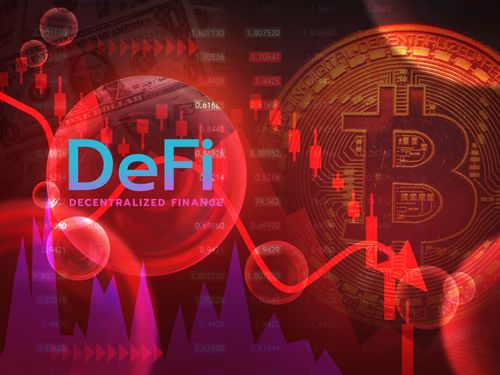As we anticipate the 4th ever-Bitcoin halving event — it's pertinent we go over the 6 memorable lessons we have learnt from previous Bitcoin halvings.

Bitcoin, the world's first and most popular cryptocurrency, has seen its fair share of ups and downs since its inception in 2009.
One of the most significant events in Bitcoin's history is the halving, which occurs approximately every four years.
Moreover, these halvings have a direct impact on the supply and inflation rate of Bitcoin, making them crucial milestones for investors and enthusiasts alike.
In this article, we will explore six unforgettable lessons from previous Bitcoin halving events, shedding light on the potential outcomes and implications of this unique phenomenon.
What is Bitcoin Halving?
Before diving into the lessons, let's briefly explain what Bitcoin halving entails. Bitcoin operates on a decentralized network, and new coins are generated through a process called mining.
Miners validate transactions and secure the network by solving complex mathematical equations. As a reward for their efforts, miners receive newly minted bitcoins.
Bitcoin halving is an event that takes place when the number of bitcoins created with each block mined is reduced by half.
This reduction occurs approximately every four years and is hard-coded into the Bitcoin protocol. The purpose behind halving is to make bitcoins scarce and mimic the scarcity of finite resources like gold.
Lesson 1 - Supply and Demand Dynamics
The impact of Bitcoin halving events on supply and demand dynamics is that as the supply of new bitcoins decreases, the rate at which new coins enter circulation slows down.
This reduction in supply often leads to an increase in demand, as investors anticipate a potential price appreciation due to scarcity. During previous halvings, there has been a correlation between the reduction in supply and a subsequent price surge.
For example, after the 2012 halving, Bitcoin witnessed a bull run, with its price skyrocketing over time. This trend continued after the 2016 halving as well, further reinforcing the relationship between supply reduction and increased demand.
Lesson 2 - Volatility and Market Speculation
Bitcoin's high volatility is amplified by halving events. Anticipation and uncertainty surrounding halvings lead to increased market speculation that heightens price volatility.
In the lead-up to halving events, traders and investors may take speculative positions, causing drastic price fluctuations. This volatility can present both opportunities and risks for market participants.
However, it is crucial to approach such periods with caution and conduct thorough analysis before making investment decisions.
Lesson 3 - Mining Economics and Miner Behavior
Bitcoin halving events have a significant impact on mining economics as they reduce miners' rewards by half, putting pressure on them to streamline operations, improve efficiency, and control costs.
In previous halving cycles, smaller and less efficient mining operations faced significant challenges. Some miners were forced to shut down if their operational costs exceeded the rewards earned.
Moreover, this consolidation within the mining industry has historically led to a concentrated pool of more efficient miners who can withstand such changes.
Lesson 4 - Network Security and Hash Rate
The hash rate, a metric measuring computing power dedicated to mining Bitcoin, plays a crucial role in network security. A higher hash rate indicates a more secure Bitcoin network as miners secure the network.
During previous halving events, there has been speculation about potential security vulnerabilities immediately after the halving. Concerns arise as miners' rewards decrease, potentially leading to some miners exiting the network.
However, history has shown that despite short-term fluctuations, the Bitcoin network quickly adapts, and the hash rate bounces back to even higher levels.
Lesson 5 - Market Sentiment and Excitement
Bitcoin halving events create excitement and anticipation in the cryptocurrency community. The reduction in supply attracts attention and ignites discussions about Bitcoin's future price trajectory.
Meanwhile, this heightened market sentiment often leads to increased media coverage and public interest.
Investors and traders closely monitor the halving, attempting to predict its impact on the market and positioning themselves accordingly. The increased attention during these periods can significantly influence market dynamics and contribute to price volatility.
Lesson 6 - Long-Term Adoption and Fundamentals
Lastly, previous Bitcoin halving events have highlighted the long-term adoption and strengthening of the cryptocurrency as a digital asset.
By reducing the supply of new coins, halvings reinforce Bitcoin's deflationary nature and emphasize its potential as a store of value.
Furthermore, halvings serve as significant milestones that mark Bitcoin's progress and showcase its resilience.
Conclusions
Bitcoin halving events have proven to be pivotal moments for the cryptocurrency. They shape its price trajectory, adoption rate, and network dynamics. These events offer valuable lessons for both experienced investors and individuals new to Bitcoin.
Understanding supply and demand dynamics, market volatility, mining economics, network security, market sentiment, and long-term fundamentals is crucial to navigating Bitcoin and making informed decisions. As we await future halving events, the lessons from the past serve as a guiding light for the future of Bitcoin and cryptocurrency as a whole.



